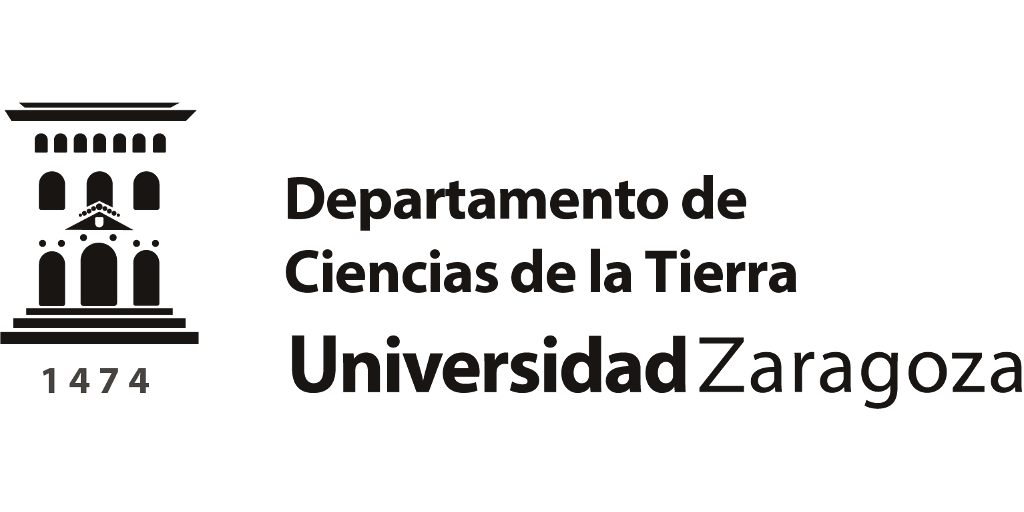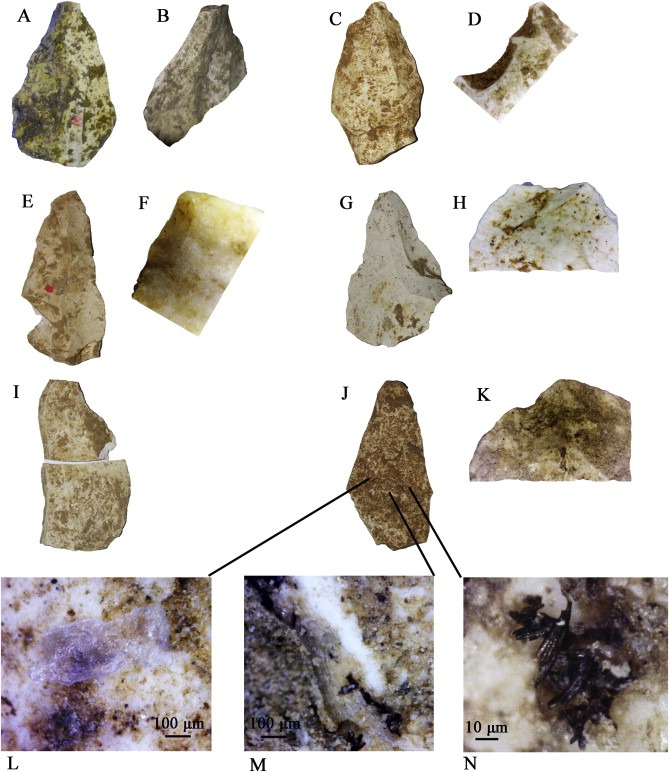Recientemente, colegas franceses y españoles han publicado un artículo (Evaluating the integrity of palaeoenvironmental and archaeological records in MIS 5 to 3 karst sequences from southeastern France) sobre la conservación de los registros paleontológicos y arqueológicos en cuevas y refugios de roca. Los registros suelen ser fragmentarios y la conservación de sedimentos y restos arqueológicos parcial y en algunos casos interferido por la acción de buscadores de tesoros, no profesionales que alteran completamente la estratigrafía. Sin embargo, los análisis tafonómicos en varias cuevas francesas muy bien conservadas atestiguan la capacidad de las cavernas para registrar datos del Cuaternario (=Pleistoceno). Es decir, los últimos 2,6 millones de años.
El estudio permite la reconstrucción de algunas características de las ocupaciones de neandertales en su contexto biostratigráfico y geocronológico en el valle del Ródano. La orilla derecha del Ródano Medio tiene más de diez yacimientos del final del Pleistoceno medio y parte del Pleistoceno superior, que en arqueología enmarca al Paleolítico Medio. Cuatro datan del final del MIS 5, MIS 4 y el comienzo de MIS 3 (Marine Isotopic Stages o estadios isotópicos marinos, la unidad de datación estratoclimática en el Cuaternario en muchos casos), con evidencias de ocupaciones neandertales: Saint- Marcel, Abri du Maras, Abri des Pêcheurs y Le Figuier. Todos son abrigos rocosos o cámaras de la cueva y porches o entradas.
Las estrategias de subsistencia de los neandertales, así como el uso del territorio a lo largo del tiempo y los posibles vínculos con los cambios climáticos los evalúan los investigadores mediante la relación entre el cambio climático y el comportamiento durante el Paleolítico Medio al describir el material arqueológico principal y los registros paleontológicos como unas aproximaciones a las reconstrucciones paleoambientales de estos cuatro yacimientos. Como conclusión reconocen que es difícil establecer una cronología y Paleoecología precisa para estas ocupaciones humanas en Francia, por lo que sus esfuerzos, consideran, no han hecho más que abrir nuevas puertas a la investigación en las que la interdisciplinariedad se ve cada vez más necesaria.
Os dejamos el resumen original del trabajo
The preservation of palaeoenvironmental and archeological records in cave and rock shelter contexts is often called into question for Pleistocene sequences. Records are always fragmentary and the preservation of sediments and archaeological remains is partial and differential, according to site history. The karst deposits are often frequently described as disturbed due to post-depositional processes and phases of erosion over time. However, taphonomical analyses and some very well-preserved evidence attest to the capacity of caves to record data. Systematic and interdisciplinary fieldwork and studies allow for the reconstruction of some characteristics of Neanderthal occupations in their biostratigraphical and geochronological context.
The geographic area under consideration here is the Rhône Valley. The right bank of the Middle Rhône Valley has yielded more than ten Middle Palaeolithic sites. Some of them have been studied recently through interdisciplinary fieldwork, providing new data on the end of the Middle Pleistocene and the beginning of the Upper Pleistocene. For this paper, we focus on four sites dated from the end of MIS 5, MIS 4 and the beginning of MIS 3, containing layers with evidence of Neanderthal occupations: Saint- Marcel, Abri du Maras, Abri des Pêcheurs and Le Figuier. All these sites are rock shelters or cave chambers and porches belonging to a karst system. The aim of our research program is to provide as much data as possible on Neanderthal occupations in their environmental contexts, in order to describe subsistence strategies and land use throughout time and potential links with climatic changes. In this paper, we evaluate the feasibility of assessing the relationship between climatic change and behaviour during the Middle Palaeolithic by describing the main archaeological material and palaeoenvironmental records of these four sites. Then, in the discussion, we conjointly examine the data from each site to assess this key question, even though the low resolution of cave and rock shelter records makes it difficult to establish an accurate chronology for human occupations and to provide a detailed description of the environment around the site for each human occupation.
La referencia al trabajo es: Moncel, M.H., Alué, E., Bailon, S., Barshay-Szmidt, C., Béarez, P., Crégut, E., Daujeard, C., Desclaux, E., Debard, E., Lartigot-Campin, A.S., Puaud, S., Roger, T. 2014. Evaluating the integrity of palaeoenvironmental and archaeological records in MIS 5 to 3 karst sequences from southeastern France. Quaternary International
El estudio permite la reconstrucción de algunas características de las ocupaciones de neandertales en su contexto biostratigráfico y geocronológico en el valle del Ródano. La orilla derecha del Ródano Medio tiene más de diez yacimientos del final del Pleistoceno medio y parte del Pleistoceno superior, que en arqueología enmarca al Paleolítico Medio. Cuatro datan del final del MIS 5, MIS 4 y el comienzo de MIS 3 (Marine Isotopic Stages o estadios isotópicos marinos, la unidad de datación estratoclimática en el Cuaternario en muchos casos), con evidencias de ocupaciones neandertales: Saint- Marcel, Abri du Maras, Abri des Pêcheurs y Le Figuier. Todos son abrigos rocosos o cámaras de la cueva y porches o entradas.
Las estrategias de subsistencia de los neandertales, así como el uso del territorio a lo largo del tiempo y los posibles vínculos con los cambios climáticos los evalúan los investigadores mediante la relación entre el cambio climático y el comportamiento durante el Paleolítico Medio al describir el material arqueológico principal y los registros paleontológicos como unas aproximaciones a las reconstrucciones paleoambientales de estos cuatro yacimientos. Como conclusión reconocen que es difícil establecer una cronología y Paleoecología precisa para estas ocupaciones humanas en Francia, por lo que sus esfuerzos, consideran, no han hecho más que abrir nuevas puertas a la investigación en las que la interdisciplinariedad se ve cada vez más necesaria.
Os dejamos el resumen original del trabajo
The preservation of palaeoenvironmental and archeological records in cave and rock shelter contexts is often called into question for Pleistocene sequences. Records are always fragmentary and the preservation of sediments and archaeological remains is partial and differential, according to site history. The karst deposits are often frequently described as disturbed due to post-depositional processes and phases of erosion over time. However, taphonomical analyses and some very well-preserved evidence attest to the capacity of caves to record data. Systematic and interdisciplinary fieldwork and studies allow for the reconstruction of some characteristics of Neanderthal occupations in their biostratigraphical and geochronological context.
The geographic area under consideration here is the Rhône Valley. The right bank of the Middle Rhône Valley has yielded more than ten Middle Palaeolithic sites. Some of them have been studied recently through interdisciplinary fieldwork, providing new data on the end of the Middle Pleistocene and the beginning of the Upper Pleistocene. For this paper, we focus on four sites dated from the end of MIS 5, MIS 4 and the beginning of MIS 3, containing layers with evidence of Neanderthal occupations: Saint- Marcel, Abri du Maras, Abri des Pêcheurs and Le Figuier. All these sites are rock shelters or cave chambers and porches belonging to a karst system. The aim of our research program is to provide as much data as possible on Neanderthal occupations in their environmental contexts, in order to describe subsistence strategies and land use throughout time and potential links with climatic changes. In this paper, we evaluate the feasibility of assessing the relationship between climatic change and behaviour during the Middle Palaeolithic by describing the main archaeological material and palaeoenvironmental records of these four sites. Then, in the discussion, we conjointly examine the data from each site to assess this key question, even though the low resolution of cave and rock shelter records makes it difficult to establish an accurate chronology for human occupations and to provide a detailed description of the environment around the site for each human occupation.
La referencia al trabajo es: Moncel, M.H., Alué, E., Bailon, S., Barshay-Szmidt, C., Béarez, P., Crégut, E., Daujeard, C., Desclaux, E., Debard, E., Lartigot-Campin, A.S., Puaud, S., Roger, T. 2014. Evaluating the integrity of palaeoenvironmental and archaeological records in MIS 5 to 3 karst sequences from southeastern France. Quaternary International
LUGAR Valle del Ródano, Francia



















